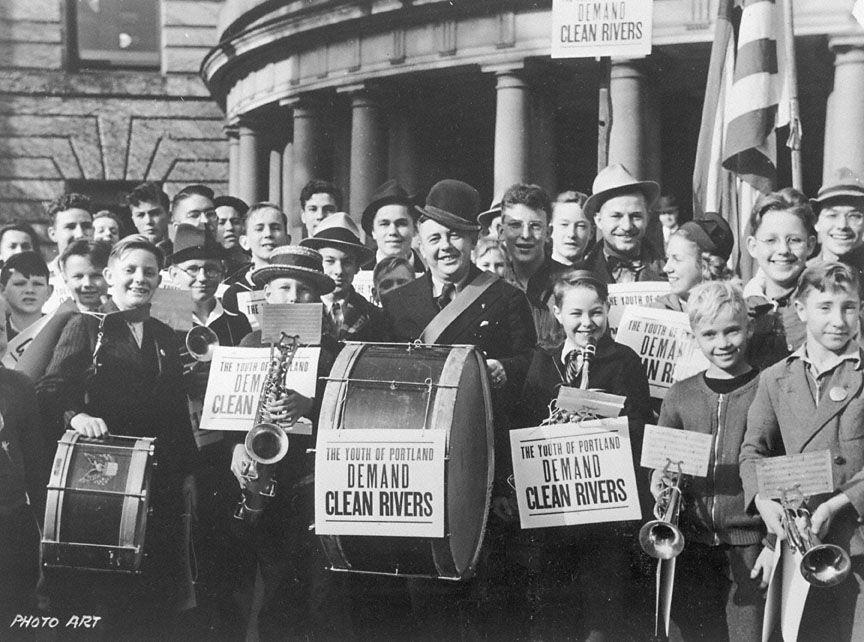- Catalog No. —
- CN 001253
- Date —
- November 5, 1938
- Era —
- 1921-1949 (Great Depression and World War II), 1950-1980 (New Economy, Civil Rights, and Environmentalism)
- Themes —
- Environment and Natural Resources, Geography and Places, Government, Law, and Politics
- Credits —
- Oregon Historical Society
- Regions —
- Portland Metropolitan
- Author —
- Oregon Journal Collection
Mayor Carson & Students for Clean River Measure
On Nov. 5, 1938, Portland Mayor Joseph Carson rallied with thousands of students in front of City Hall to support two voter initiatives to clean up the Willamette River. An unidentified photographer working for the Portland Photo Art studio took this photograph.
Several days after the rally, Portland voters passed a city initiative to fund a new sewer system through increased water rates and federal moneys. State-wide, Oregon voters overwhelmingly passed another initiative aimed at cleaning up the Willamette River. The “Water Purification and Prevention of Pollution Bill” created the Oregon State Sanitary Authority to implement and oversee river clean up.
People first began to notice serious pollution on the Willamette River in the 1920s. Chemical waste from pulp mills and raw sewage depleted the river’s oxygen content, killing fish, creating a foul stench, and making the river unusable for swimming.
While voters approved both clean-up measures, little was actually done to improve the river’s water quality. Work began on the Portland sewer system, but World War II interrupted the construction and it was not completed until the early 1950s. In addition, the state was reluctant to press the major polluters, the pulp mills, to reduce their waste. The state instead focused on using dams to control river flow and dilute the pollution. It wasn’t until the 1970s that Oregon forced pulp mills to upgrade their equipment and reduce chemical waste outputs into the river.
Written by Kathy Tucker, © Oregon Historical Society, 2002.
